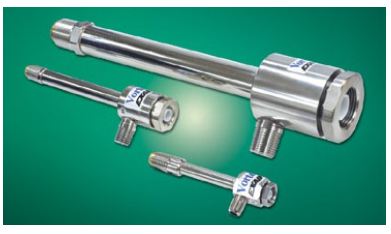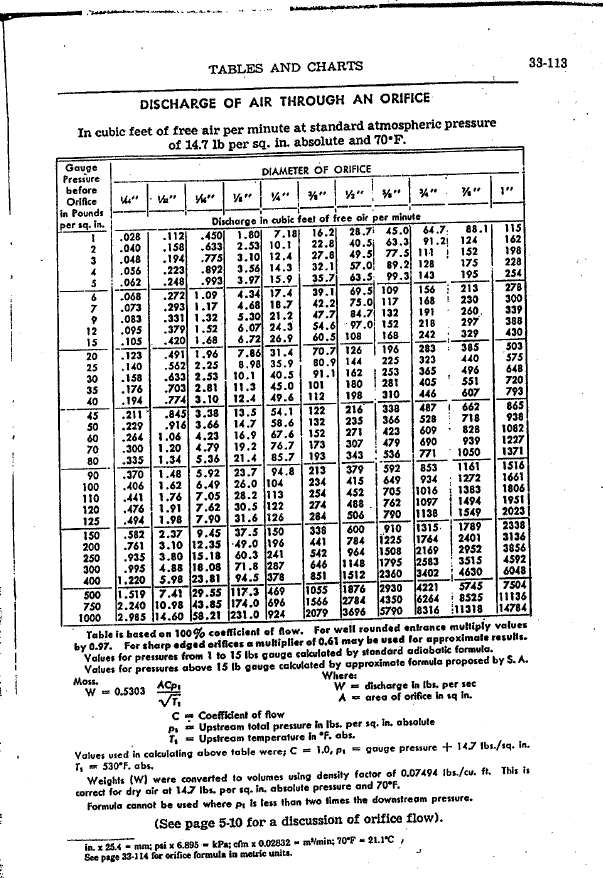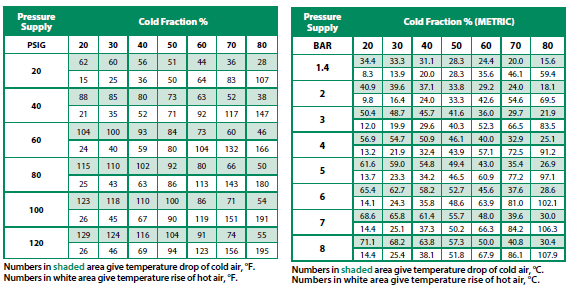Vortex Tubes are near the top of the list of the most interesting uses of compressed air: Cold (and hot) air, generated instantly, from a device with no moving parts. Why don’t we use them for EVERYTHING? It’s not that it CAN’T be done, but it can be impractical to do so. Consider:
While researching our Cabinet Cooler Systems, some callers will ask about using this technology to cool a space larger than an electrical panel, like a server room. I spoke with just such a caller once, who had 7.5kW worth of heat estimated in a server room that was under construction, and had been asked to research cooling solutions…so we did:
- Since 1 watt equals 3.41 Btu/hr, 7.5 kilowatts equals 25,575 Btu/hr worth of cooling required.
- Our highest capacity single Cabinet Cooler generates a cooling capacity of 2,800 Btu/hr, so we talked about ten of them, for ~10% safety factor, which was reasonable for the purposes of our discussion.
- Each 2,800 Btu/hr Cabinet Cooler uses 40 SCFM @100psig, for a total of 28,000 SCFM. Using a common thumbrule that says a typical industrial air compressor generates 4 SCFM per horsepower, that means they’d need a 100HP compressor (or that much capacity from their whole system) just to run these Cabinet Coolers. Adding that cooling capacity to their HVAC requirements made more sense.
Of course, with every rule, there’s an exception: an independent crane operator carries a Model 3250 Large Vortex Tube with him for cab cooling in the tower cranes he’s contracted to operate. While the US Department of Energy considers “personnel cooling” to be an inappropriate use of compressed air, the small fans typically found in these cranes’ cabs offer little comfort to an operator spending all day, 50 feet off the ground, in the summer heat of the Deep South!

Another common question regards the use of a Vortex Tube with another EXAIR product…the most common being an Air Knife. These callers want to blow cold air onto something, but instead of the conical and relatively small flow pattern the Vortex Tube discharges, they want to blow a curtain of cold air. The design & function of both the Vortex Tube, and the Air Knife, work against this idea:
- The cold air has to exit the Vortex Tube at, or very near, atmospheric pressure. If it encounters much back pressure at all, performance (as measured by the temperature and flow rate of the cold air) will deteriorate.
- An Air Knife, by design, is pressurized all the way to the point where the compressed air flow exits the 0.002″ thick gap. That’s far too much back pressure for a Vortex Tube to operate under.
- Even if the Vortex Tube DID supply cold air, under pressure, to the Air Knife, the tremendous amount of environmental air entrained by the Air Knife would still result in a total developed flow temperature that was much closer to ambient temperature for the area.

One “workaround” for this is what we informally call a “cold air knife” – that’s when you plumb the cold air from a Vortex Tube into a length of pipe with a series of holes drilled along its length. Let’s say a building products manufacturer wanted to blow cold air across a 10ft wide continuous sheet of roofing material…because they did:
- I recommended that they take a PVC (because it’s non-conductive and wouldn’t transfer heat from ambient as fast) pipe a little longer than 10ft, cap the ends, drill 1/8″ holes every inch (total of 120 holes).
- From the table below, we see that a 1/8″ diameter hole can flow as much as 1.1 cubic feet per minute @1psig*, so 120 of those holes will pass ~132 cubic feet per minute worth of air flow.
- Four Model 3240 Vortex Tubes were specified: when set to an 80% Cold Fraction, 80% of the 40 SCFM that each will consume, or 32 SCFM, is directed to the cold end. 32 SCFM X 4 3240’s = 128 SCFM. Close enough. They plumbed those 4 Vortex Tubes at approximate equal distances along the length.

A Model 3215 Medium Vortex Tube supplied @100psig will flow 10 SCFM worth of cold air when set to a 67% Cold Fraction**, which will give us a curtain of cold air that’s a little more than 71°F colder than the compressed air supply:

If you’ve got an application involving the need for cold air, on demand, EXAIR has a variety of products that’ll do just that. Give me a call to find out more.
Russ Bowman, CCASS

Application Engineer
EXAIR Corporation
Visit us on the Web
Follow me on Twitter
Like us on Facebook


